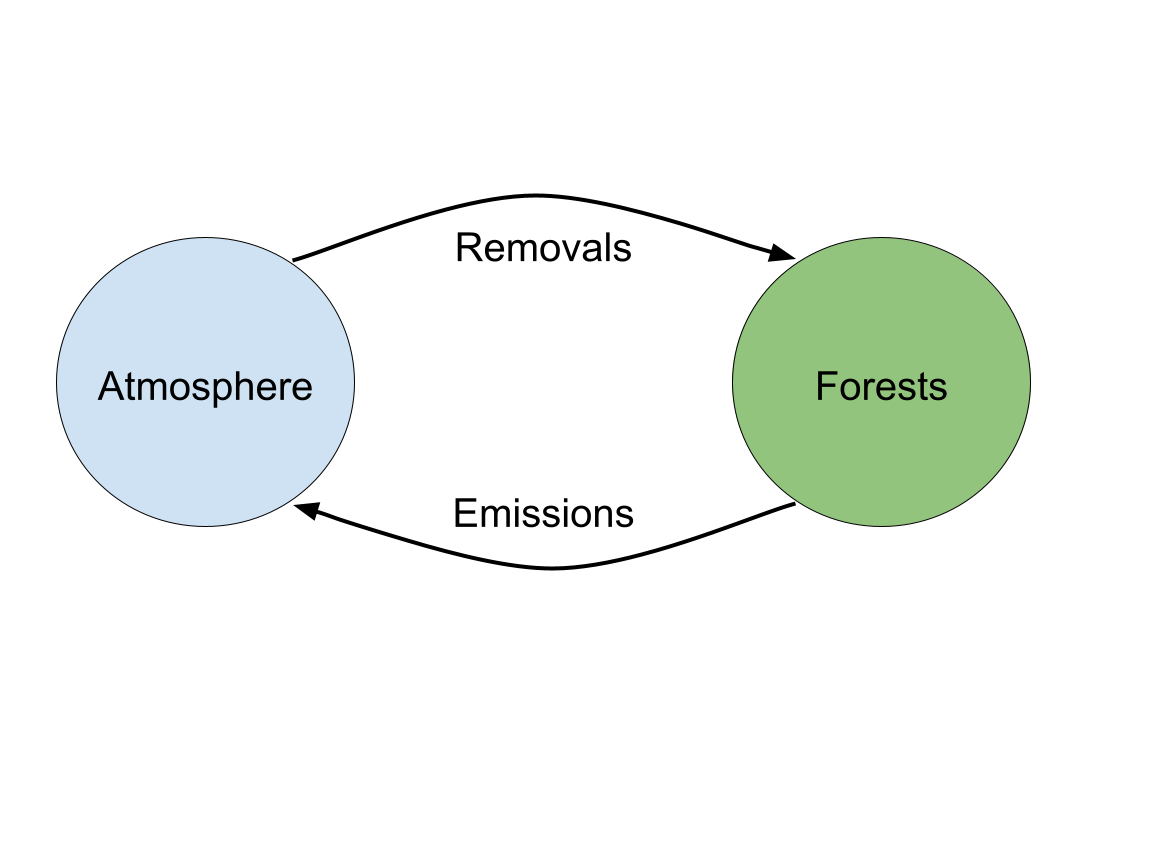Source >>>

Zack Parisa Follow Apr 2 · 3 min read
This article is part of a series of blog posts on forest carbon economics. These bite-sized posts are adapted from SilviaTerra’s white paper “Forests and Carbon: A Guide for Buyers and Policymakers.”
There are many moving parts when it comes to forest carbon economics, but having a firm grasp of the basics makes it easy to understand the big points. In this article, we’ll discuss some first principles that must underpin any effective forest carbon program.
Moving Carbon Between Pools
The most fundamental goal of any carbon program (forest carbon or otherwise) is to reduce the amount of carbon in the atmosphere. Carbon can be neither created nor destroyed — all we can do is move it from one “pool” to another. Effective forest carbon programs move carbon from the atmosphere to forests and limit the flow in the opposite direction.

Atmosphere to Forests
When trees grow, the amount of carbon in the forest pool increases and the amount of carbon in the atmosphere pool decreases. You’ll sometimes see this referred to as a “removal” of carbon from the atmosphere.
Trees start small and grow quickly, but the growth rate slows as the trees grow larger. Different tree species on different sites will vary in growth rates. Understanding the carbon removal potential of different forested acres at each point in their life cycle is important for quantifying climate impact.
Forests to Atmosphere
Conversely, carbon also moves from the forest pool to the atmosphere pool. This is sometimes referred to as an “emission” of carbon. Emissions can occur due to natural disturbances like wildfires, hurricanes, or insect infestations.
Timber Economics
Emissions can also occur due to man-made interventions such as timber harvesting. In fact, harvesting timber is the key driver of how forests are managed today. Understanding basic timber economics is critical for understanding the incentives that can cause shifts in the balance of carbon between forests and the atmosphere.
The “net present value” curve for an acre of pine trees is shown in black on the graph below. Future articles will explore this curve and the underlying timber economics as it relates to the concept of “additionality” in carbon accounting.
Carbon Today or Carbon Tomorrow?
Time plays a critical but under-appreciated role in climate finance. Simply put, it is more valuable to remove one ton of carbon from the atmosphere today than it is to remove one ton 100 years from now.
To understand and quantify the “time value of carbon” we will rely on the classic economic concept of discount rates. The idea of the “time value of money” is quite similar, and in fact, plays a central role in determining the shape of the net present value curve of a timber rotation. Foresters are already quite used to dealing with discount rates applied over many decades, so the concept is a natural fit for forest carbon.
For more on this subject read SilviaTerra’s white paper“Forests and Carbon: A Guide for Buyers and Policymakers.”

